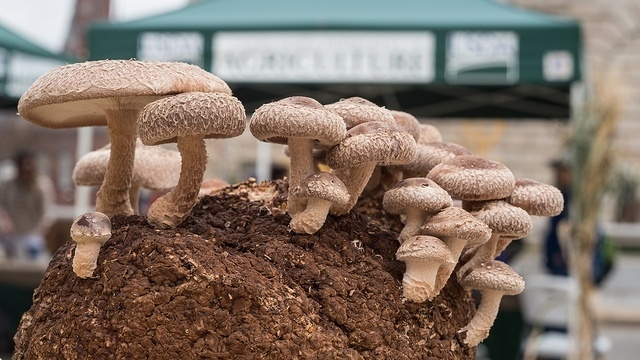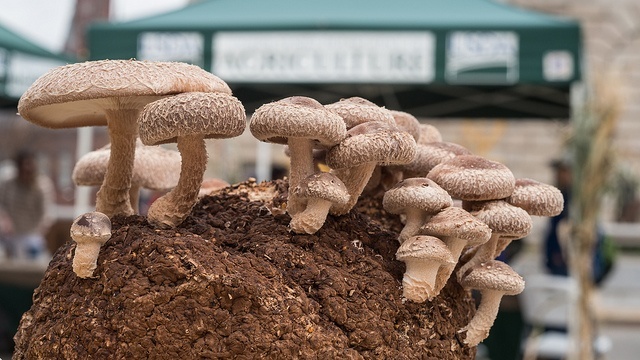
Fungi Fun: Unleashing the Magic of Mushroom Growing

Mushroom growing is a captivating and rewarding endeavor that has been gaining popularity among avid gardeners and food enthusiasts. Whether you have a green thumb or are simply intrigued by the world of fungi, exploring the art of cultivating mushrooms can unlock a magical journey of discovery right in your own backyard. From the earthy aroma that fills the air to the fascinating process of watching tiny spores transform into plump and delectable mushrooms, this captivating hobby offers a unique perspective on the wonders of nature’s hidden treasures.
The allure of mushroom growing lies in its ability to bridge the gap between science and art, requiring a delicate balance of knowledge and creativity. With their intricate network of mycelium and mysterious nature, mushrooms have captivated human imagination for centuries. From their use in culinary delicacies to their medicinal properties, mushrooms offer a wide range of exciting possibilities. Embarking on a journey to grow your own mushrooms not only grants you access to a lifelong fascination, but also the opportunity to explore the interconnectedness of nature and the significant role fungi play in our ecosystem.
Whether you are a seasoned gardener or a novice with a curiosity for the unknown, mushroom growing opens a world of endless possibilities in sustainable agriculture. In the upcoming chapters, we will delve into the techniques and tools required to cultivate various mushroom species, discover the secrets behind their growth patterns, and explore the ways in which you can create the perfect environment for their flourishing. With a little patience, a touch of creativity, and a whole lot of mushroom love, you too can embark on a captivating journey that unveils the magic of mushroom growing. So grab your gardening gloves, sharpen your senses, and let’s dig deep into the world of fungi fun!
Choosing the Right Mushroom Varieties
In order to have a successful mushroom growing endeavor, it is crucial to choose the right mushroom varieties. The type of mushrooms you choose will determine the requirements for growing conditions, as well as the potential yield and flavor of your harvest. Here are some key factors to consider when selecting your mushroom varieties:
Growth Habit: Different mushroom species have varying growth habits. Some mushrooms, such as oyster mushrooms, are known for their vigorous and fast-growing nature, making them a popular choice for beginners. Others, like shiitake mushrooms, require more patience and specific environmental conditions for optimal growth. Take into account the amount of time and effort you are willing to invest in cultivating your mushrooms.
Mushrooms Golden TeacherClimate Adaptability: Mushrooms have specific climate requirements for successful cultivation. For instance, certain varieties thrive in cool, damp environments, while others prefer warmer temperatures. Make sure to choose mushroom species that are well-suited to your local climate or consider setting up a controlled environment, such as a greenhouse or indoor growing system, to create the ideal conditions.
Culinary Preferences: The culinary qualities and flavors of mushrooms can vary greatly. Some varieties, like the versatile button mushrooms, have a mild taste that complements a wide range of dishes. On the other hand, mushrooms like porcini or morel mushrooms have a distinct earthy flavor that adds depth and complexity to culinary creations. Consider your personal taste preferences and the types of dishes you envision using your homegrown mushrooms in.
Remember, when it comes to mushroom growing, selecting the right mushroom varieties is just the beginning. Understanding the specific needs and requirements of each species will help you create a successful and rewarding mushroom growing experience.
Setting Up the Ideal Growing Conditions
To ensure successful mushroom growing, it is crucial to set up the ideal growing conditions. These conditions play a vital role in promoting the growth and development of your mushrooms.
Firstly, it’s important to create a suitable environment for the mushrooms to thrive. This includes providing them with the right temperature, humidity, and light. Most mushrooms prefer a temperature range between 55 to 75 degrees Fahrenheit (13 to 24 degrees Celsius), with a humidity level of around 80%. Additionally, mushrooms thrive in indirect light, so it’s best to find a location that offers a good balance of natural light without direct exposure to sunlight.
Secondly, the growing medium or substrate is another key factor for successful mushroom cultivation. Different mushroom species have varying preferences when it comes to their growing medium. Common options include straw, sawdust, woodchips, or a combination of these materials. It’s important to ensure that the substrate is properly prepared and sterilized to prevent contamination.
Lastly, ventilation is an often overlooked aspect of mushroom growing. Good air circulation is essential to maintain a healthy growing environment and prevent the buildup of carbon dioxide. To achieve this, you can use fans or simply provide adequate spacing between mushroom containers. Proper ventilation helps prevent the growth of mold and ensures that the mushrooms receive fresh air for optimal development.
By setting up the ideal growing conditions, you set the stage for successful mushroom cultivation. Taking into account temperature, humidity, light, substrate, and ventilation will greatly enhance your chances of a fruitful and rewarding harvest.
Harvesting and Storing Mushrooms
When it comes to mushroom growing, knowing the right time to harvest is crucial. Once the mushrooms have reached their ideal size, typically when the caps are fully open but before they start to release spores, they are ready to be picked. Gently twist or cut the stem close to the base, being careful not to damage the surrounding mycelium. Harvesting at the right time ensures the best flavor and texture.
After harvesting, it’s important to store your mushrooms properly to maintain their freshness and extend their shelf life. Start by gently brushing off any excess dirt or debris using a soft brush or cloth. Avoid rinsing them with water as mushrooms are highly porous and can quickly absorb moisture, which can lead to spoilage. Instead, store them in a paper bag or a breathable container to allow for air circulation.
For longer-term storage, consider drying your mushrooms. This method not only preserves their flavor but also concentrates their umami taste. To dry them, slice the mushrooms into thin, uniform pieces and place them on a drying rack or a baking sheet lined with parchment paper. Set the mushrooms in a well-ventilated area with low humidity, away from direct sunlight. Allow them to air dry until they become brittle and no longer have any moisture inside.
Remember, proper harvesting and storage techniques are essential to fully enjoy the fruits of your mushroom-growing endeavors. By harvesting at the right time and storing them correctly, you can savor the exquisite flavors and unique textures of your homegrown mushrooms for a longer time.



